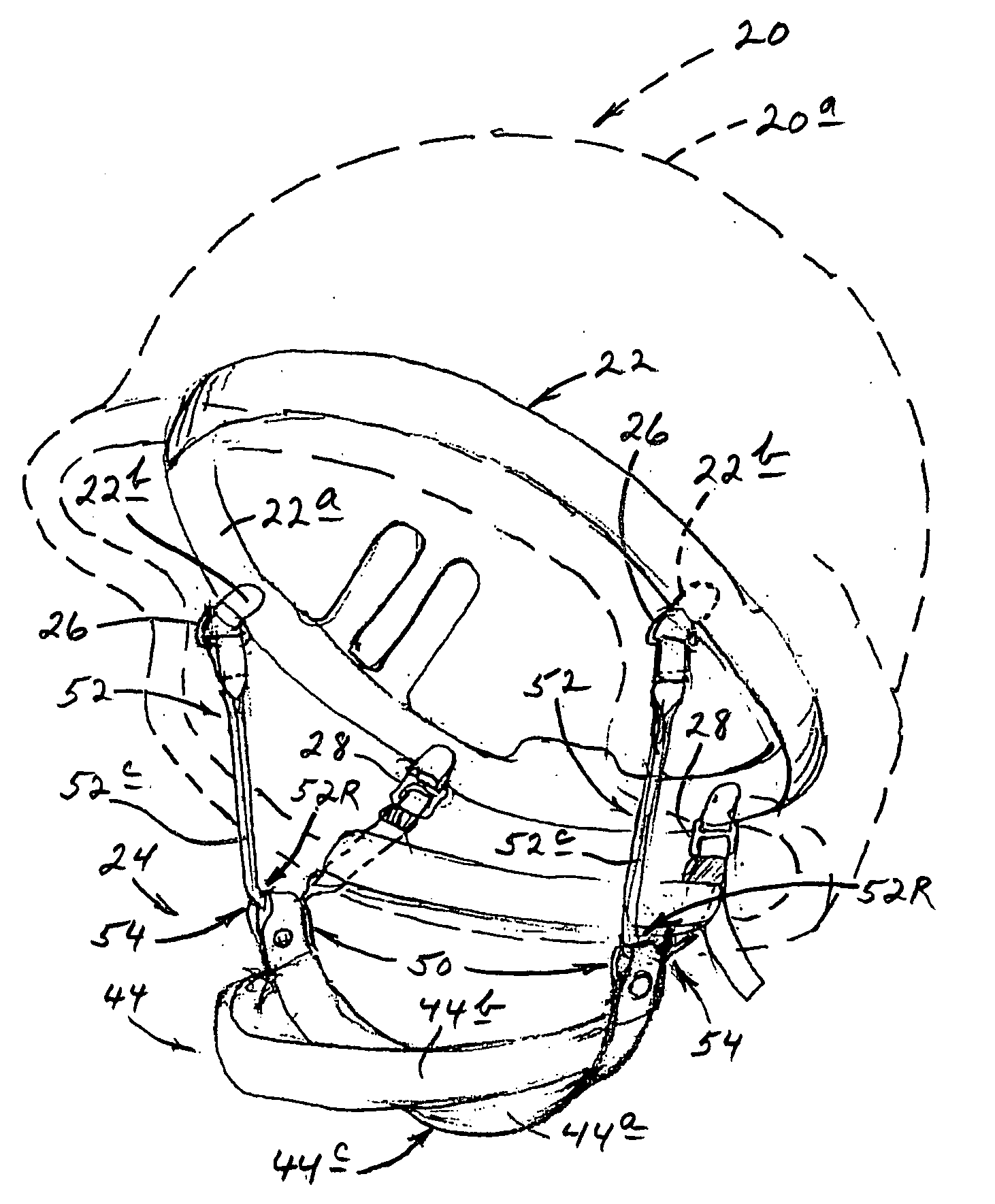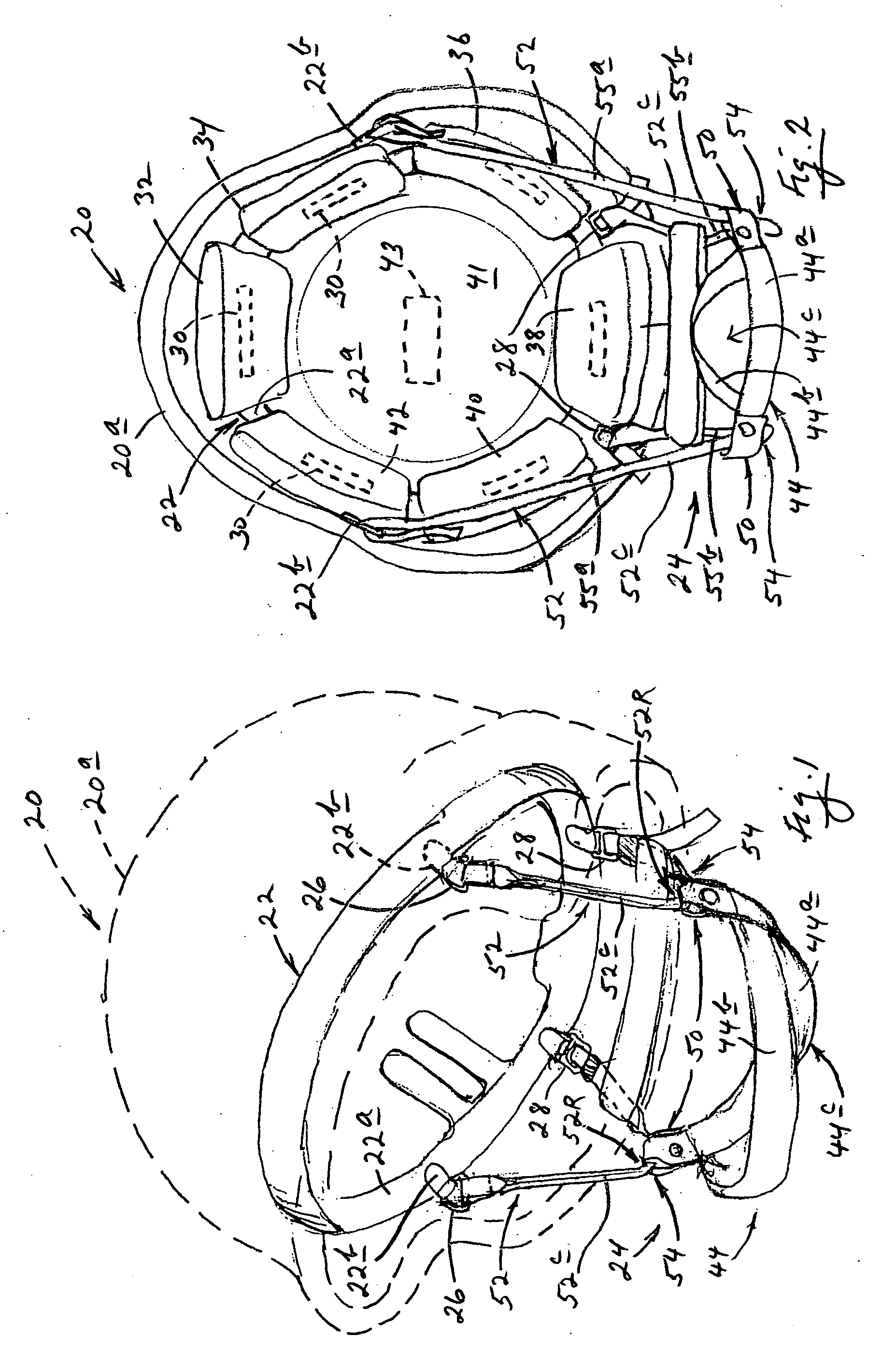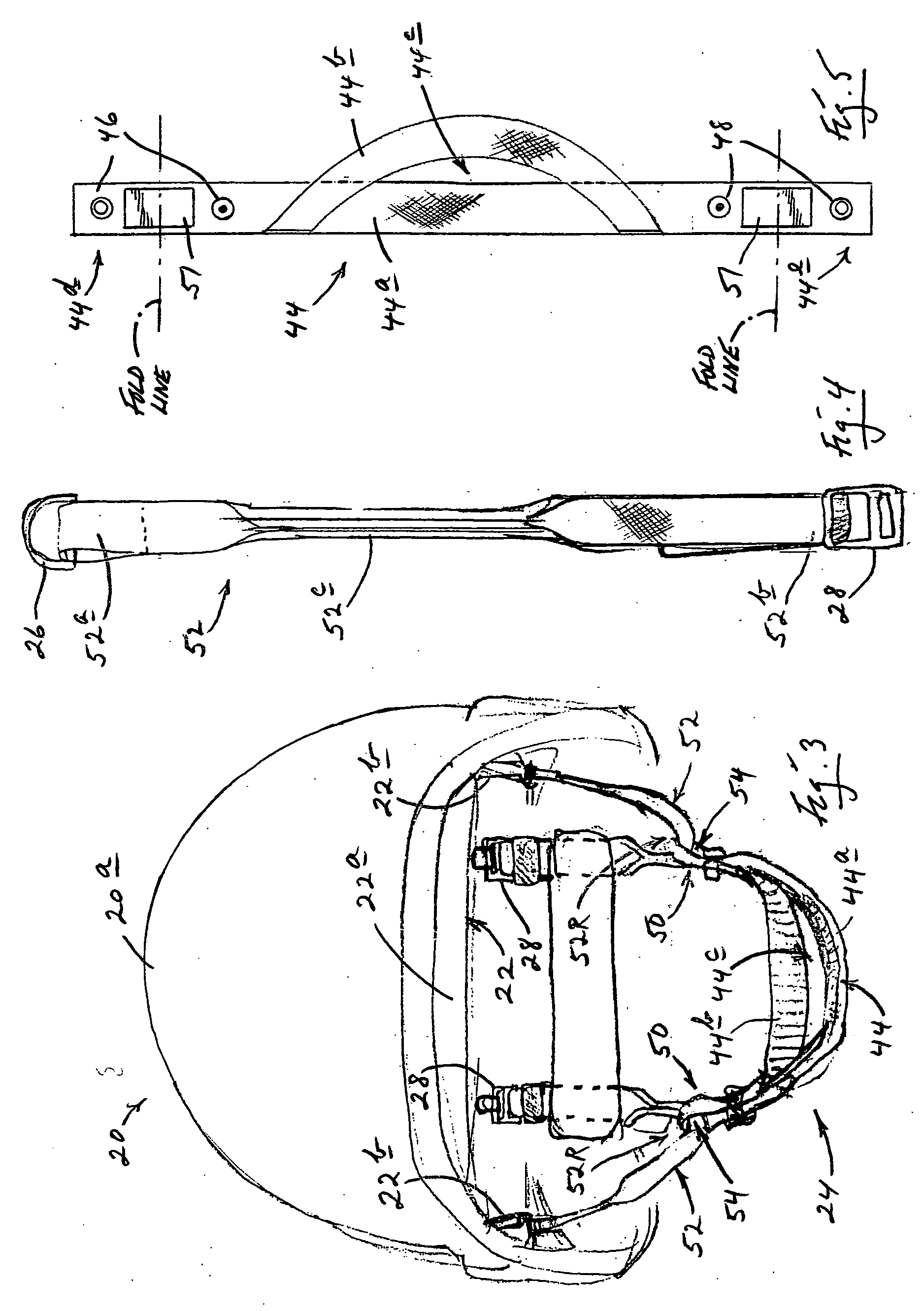Helmet chin-strap harness structure
a chin-strap harness and harness structure technology, applied in helmet covers, headwear fastening, protective garments, etc., can solve the problems of disadvantages of this kind of conventional arrangement, general lack of quality in prior art chin-strap harness structures, and in its various forms
- Summary
- Abstract
- Description
- Claims
- Application Information
AI Technical Summary
Benefits of technology
Problems solved by technology
Method used
Image
Examples
Embodiment Construction
[0023] Beginning with attention directed to FIGS. 1-3, inclusive, in the drawings, shown generally at 20 is a military helmet having a shell 20a, on the inside of which, in the particular helmet illustrated herein, is an appropriately anchored, wrap-around suspension, or suspension frame, 22 made, for example, in accordance with the teachings of U.S. Pat. No. 6,681,402 B2, issued Jan. 27, 2004 for “Helmet Liner Suspension Structure”, the content of which is hereby incorporated herein by reference. Suspension 22 is employed, as will be explained shortly, to support the harness structure of the present invention, as well as a head-cushioning pad system. It should be understood that while various attachments are illustrated and described herein in the context of the presence of suspension 22, the use of such a suspension is not required by, or part of, the present invention, and all such attachments could be made differently, as for example, directly to the shell of a helmet, such as t...
PUM
 Login to View More
Login to View More Abstract
Description
Claims
Application Information
 Login to View More
Login to View More - R&D
- Intellectual Property
- Life Sciences
- Materials
- Tech Scout
- Unparalleled Data Quality
- Higher Quality Content
- 60% Fewer Hallucinations
Browse by: Latest US Patents, China's latest patents, Technical Efficacy Thesaurus, Application Domain, Technology Topic, Popular Technical Reports.
© 2025 PatSnap. All rights reserved.Legal|Privacy policy|Modern Slavery Act Transparency Statement|Sitemap|About US| Contact US: help@patsnap.com



